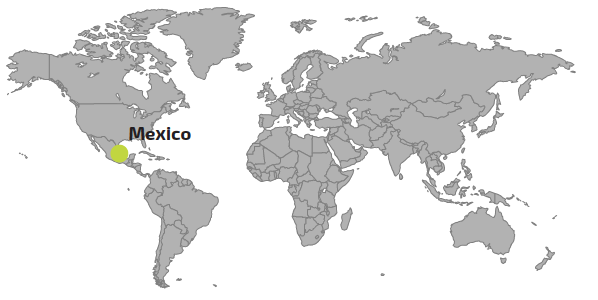Challenge
Tlamatini Field, discovered in 2019, contains significant deposits of oil and gas in shallow water off the coast of the state of Tabasco, Mexico. The area is noted for complete loss of circulation in some intervals, wellbore instability, highly permeable formations, gas influxes aggravated by variations in pore pressure, and frequent stuck pipe due to differential pressures. These challenges typically lead to additional costs due to additional fluid material requirements, extra casing runs, and longer drilling times.
When the Impact Fluids team arrived at the rig, operations was experiencing a total loss of circulation in the portion of the 26-in. interval from 565 to 1,000 m (1,850 to 3,280 ft) MD where the erratic fracture gradient was as low as 1.16 sg (9.68 lb/gal) in places. While drilling the 26-in. interval with an inhibitive polymer water-based drilling fluid, the mud weight was increased from 1.16 to 1.20 sg (9.68 to 10 lb/gal). The 20-in. casing run was stuck and cemented at 565 m MD. The options were: 1) to run a sacrificial casing from 565 to 1,000 m MD or 2) continue drilling the 16-in. interval from 1,000 to 1,680 m (3,280 to 5,510 ft) MD while increasing the mud weight from 1.25 to 1.33 sg (10.4 to 11.1 lb/gal). The higher mud weight under the existing conditions would certainly trigger additional wellbore instability, gas influxes, stuck pipe, and jeopardize the ability to complete the 16-in. interval to 1,680 m.
Solution
The first step was to control the lost circulation and strengthen the wellbore with FLC® products and LCP 2000® pill. During the first day, FLC® SUPREME and FLC® EXTREME pills remedied the total lost circulation problem in the 26-in. interval.
The second step was to drill the 1000 to 1680 interval through the highly permeable Middle and Lower Pliocene formations using FLC 2000® wellbore stabilizer added to the oil-based drilling fluid to effectively seal formation pores and isolate the wellbore from the formation pressure variations. After each stand, pills of FLC® wellbore stabilizer products were run to enhance the wellbore shielding. The wellbore shielding effectively isolated the wellbore from the formation influxes and mitigated the gas migration problems along with reducing the risk of mud losses leading to wellbore instability and differential sticking.
Results
Three FLC® pills stopped the total lost circulation in the 26-in. interval in less than a day. The 16-in. interval was drilled in 6 days with zero mud losses and minimal washout by adding FLC 2000® to the drilling fluid and FLC® SUPREME pills to further enhance the wellbore shielding. The average ROP was 40 m/hr and 1,200 psi differential pressure. The well was successful drilled to program depth without requiring a sacrificial casing from 565 to 1,000 m.

